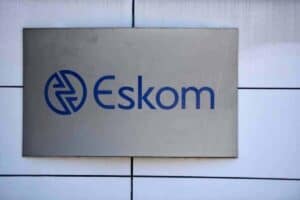"Decreasing consumption, coupled with increasing costs and debt, keeps pushing Eskom to advocate for higher tariffs, with a potential spike of up to 44% in 2025."

Consumers are still in search of alternative energy supplies, even in the absence of load shedding.
A report by GoSolr details that consumers are searching for alternative options due to the high cost of electricity.
Andrew Middleton, GoSolr’s co-founder and CEO, says the growth of renewable energy was at first driven by loadshedding, but now it is driven by expensive electricity.
“This is an indication that South Africans are feeling the pitch of the rising electricity prices.”
State of solar
GoSolr’s second quarterly “Light Paper” report was released on Tuesday. The contents of the report indicate that there is a need for a restructured, collaborative approach among government and the private sector to address rising energy costs.
The report reveals that more rooftop solar capacity was added in the second quarter, with 5 790.5MW installed as of June 2024. Globally, solar investment has outpaced all other generation technologies. “South Africa is set to add a fifth of Africa’s solar capacity.”
ALSO READ: How to escape electricity costs with solar
Eskom plans for higher tariffs
Middleton makes mention that City of Johannesburg residents have been subjected to the new fixed fees for pre-paid electricity meters, which will also play a role in increasing the demand for renewable energy.
He says private renewable energy generation is helping to reduce the demand for power. “The demand for electricity production, transmission, and distribution is giving other electricity producers the leeway they need to enter the market.”
By the second quarter, the country’s electricity availability stood at 66%, which is a 15% increase from the beginning of 2024.
“Decreasing consumption, coupled with increasing costs and debt, keeps pushing Eskom to advocate for higher tariffs, with a potential spike of up to 44% in 2025,” he adds. Therefore, more consumers are looking for alternative energy supply, rather than relying on the grid.
ALSO READ: R200 electricity charge ‘a lazy fundraising exercise’
Reliable and cost-effective power
He believes that as time goes on and the cost of living keeps increasing, many consumers will be on the hunt to secure a reliable and cost-effective power supply. Regulatory setbacks keep holding back the progress to be made in renewable energy supply.
Regulatory announcements include potential tariff increases from Eskom, and the introduction of import duties on solar panels.
“Making the shift doesn’t come without its challenges. GoSolr argues against Eskom’s proposed 70/30 split, where 70% of the revenues are linked to fixed charges and 30% to energy charges, as this does not align with international standards,” says Middleton.
GoSolr suggests instead that the fixed versus energy charge ratio should not exceed 40/60, as per international standards.
“Effective market signals include scrapping the 10% import tax on solar panels and implementing incentives that encourage households to discharge batteries during peak hours and at critical times of the year when the system needs them most.”
ALSO READ: All your questions about solar power answered






